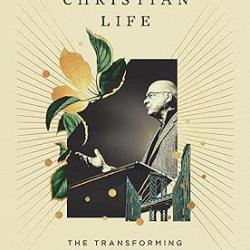This post is part of a series walking through the second volume of Abraham Kuyper’s Common Grace.
As we saw in the previous chapter, the “church as organism” and the natural church are far apart, given that the national church teaches the salvation of the whole nation (however small the church as organism actually is). The national church’s defense of “this public lie” (about the salvation of the nation as a whole) is three-pronged:
- It’s on God to sort this out in the end;
- It’s good for the nation and society;
- Practically, this is how things have to be–there’s no way out, and so the world just has to infest the church.
So the church atrophies while the world goes on unaffected.
“Serious thinkers” recognize the problem but cannot undo it, since they’re unwilling to undermine the national church as an idea and as a confession. They are modern Erasmians who cannot accept “breach between Christ and the world,” or that there are some things He does not bless in society. Confronted with this truth, these thinkers retreat to the antinomianism of 1. above.
But what is the actual theological justification for a national church? Mostly, it’s just a poor reading of the Old Testament that ignores the work of Christ in fulfilling that particular dispensation. [And I’ll avoid standing on my Baptist platform and pointing out that Kuyper does the same thing with regard to infant baptism…]
Still, at the very least the national church defenders and we orthodox believers can agree that the Gospel extends “further than the souls of the elect.” The national church simply goes to far in incorporating too much of that human life into the church.
But contrast, the church as organism doctrine holds that Scripture sets a specific structure to be followed for the institution of the church that keeps it structurally in its own sphere while letting its influence flow into other legitimate spheres. The national church only sees that all things must happen in one sphere, and so grows that sphere at the cost of confession and holiness. We, on the other hand, see two spheres–that of confessing believers and that of covenant. The former includes baptism, and within that the “assembly of believers” who take the Lord’s Supper.
To be sure, light shines from this sphere (the only place it burns in this world) onto other spheres, and this the more brightly it burns in the church. What this light touches is the more informal ‘second sphere’ of Christianity which is not within the church but instead shows the extent to which the church as organism reaches, even beyond where faith may stop (at least in its resonance). In this sense, bot the national church and the church as organism have the same goals, and only have different views of the means. The national church says that Christian influence stays within the church (and subsequently extends the church to cover all of life). We say that there must be a church of confessing believers that guards against hypocrites, but that also has influences beyond itself.
Which brings us back to the particular grace vs common grace argument–if we only see particular grace, the national church model makes some kind of sense (especially for the Roman Catholics and their mystical view of the law). We see, however, through common grace, three spheres at work:
- The church as institution;
- The world of pagan darkness where the good news has not yet spread [Kuyper cites Asia and Africa here]
- The world dimly lit by Christianity;
Kuyper appeals as evidence again to the leaps forward in technology in sphere 3. Even, he argues, the national church can’t claim credit for that.
Dr. Coyle Neal is co-host of the City of Man Podcast and an Associate Professor of Political Science at Southwest Baptist University in Bolivar, MO












